On the occasion of the 35th anniversary of Euskalerria Irratia, the radio team has organized various activities, gathered several testimonies and reflected on the past, present and future of the project. Some of them have been included in this article.
BIG 35th ANNIVERSARY
Tuesdays of November are usually cold, dark and sad in Iruñea. Autumn has no back. The weekend seems distant. It was Tuesday, November the 7th, 2023. The minimum temperature was 4 degrees and the maximum was 11. An ideal environment to stay at home. It didn"t seem like the ideal day for organizing a public act. On that day, however, Euskalerria Irratia was 35 years old and the Vascophiles fulfilled the Kafe Antzokia of Pamplona to celebrate its anniversary. Some people were left out without being able to enter.
“I haven’t moved, but seeing this crowd I’ve been excited, I’ve felt a member of a community,” said Joxerra Senar, a radio contributor and a member of the Berria newspaper. “We like to advertise in Euskalerria Irratia, because it is effective and we are vasophiles. But today and here we realize that we are part of a community, we are supporting a community project,” said Pello Iaben of the Iaben Insurance Company.
Four directors from the Government of Navarra, four mayors from the Region of Pamplona, directors of three newspapers, Navarros leaders from three unions, a wide representation of Euskalgintza and members of different social groups met at the headquarters. But for the radio team the most important, the most emotional, was the mass response of the community, which is Euskalerria Irratia: Basque, professional and, above all, community radio.
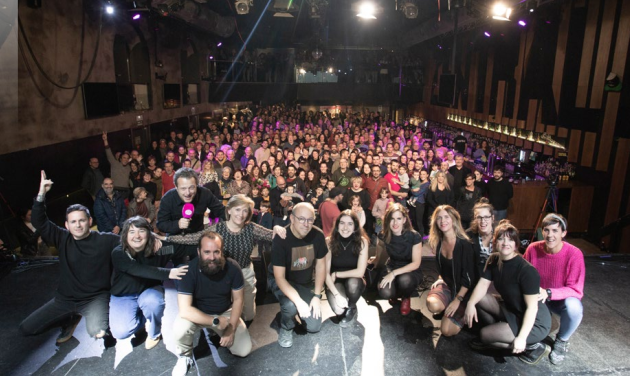
ACCOMPANYING RESILIENCE
In an interview conducted by Ttap magazine, edited by Euskalerria Irratia in collaboration with Goiena, Gorka Urbizu stated that the Basque leaders of UPN will have to be thanked once, for being an essential stimulus for the creation of various projects in favor of the Basque country. Berri Txarrak pointed out by way of example that, among other things, behind the decision to make music only in Euskera was a desire to respond to the attacks in Euskera.
The model of communicative project developed by Euskalerria Irratia has it. The regional authorities denied the licence for more than 27 years, placing a heavy burden on it, inter alia, a great economic and forceful waste of power to appeal to the courts and organise demonstrations and other acts of response; great difficulties in obtaining public subsidies and private and institutional publicity.
However, the strength of this attack also served to boost radio: radio was in favor of the willingness of members of the Basque community to respond to the aggressions in Basque.
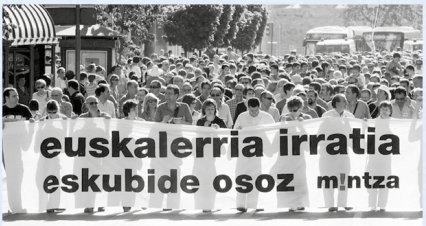
THE COMMUNITY AS AN AXIS
Despite the resilience, the radio team has done a lot of work to weave these networks. From the outset, radio had a close relationship with different cultural, social and political actors. In the early 1990s, however, it advanced in the consolidation of the collaborating community. “Juan Kruz Lerrora and I started working on radio. We both went into the world of free radios, we started developing a model that has then characterized our radio, opening the doors of the radio to the community, creating the figure of fixed collaborators. We had very few financial resources, but people were and are very much in favour,” said radio journalist Pello Arguiñarena.
The prototypical local media in Euskera is outside the capital, in a region with a dense community of speakers, it"s paper and it works hyperlocal information, which doesn"t go into big newspapers. In the capital, this model doesn"t work, because big newspapers are dealing with this information. In this sense, radio has developed a new model based precisely on this community character: it acts with the community and for the community, taking into account the various tendencies of its members, and that is its differential content, which cannot be found in the Spanish media.
COMMUNITY
“The mission of Euskalerria Irratia is that all members of the Vasco-speaking community of the Region of Pamplona feel represented and comfortable with the programming, and for this to happen for years we have worked intensively for decades,” explains Argiña.
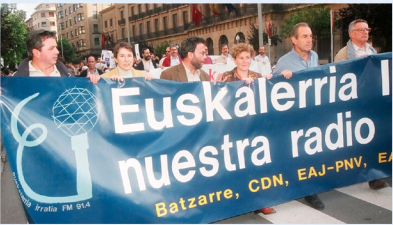
Some examples can be quite illustrative. President Uxue Barkos was a collaborator of Euskalerria Irratia before the creation of Nafarroa Bai and Geroa Bai. The mayor of Pamplona, Joseba Asiron, had made a historic collaboration on the radio before signing up for EH Bildu. The first two secretaries-general of Podemos in Navarra for the formation of the purple facet were realized in the Torre Irrintzi.
Regarding creativity, Gorka Urbizu held a musical session in Euskalerria Irratia for two years, recently released Berri Txarrak. Toño Muro and Sergio Ibarrola Zara from the Balerdi-Balerdi group did the same before and after. Beñat Rodrigo Kiliki Fresco collaborated in the Metropoli Foral program before Chill Mafia published his first album. The members of Ibil Bedi, Tatxers, Goxuan Salsa collaborate on the radio. Ibil Bedi premiered his last album in Euskalerria Irratia. Gorka Urbizu presented his first solo album from the hand of Euskalerria Irratia.
Aingeru Epaltza, Inma Errea, Jon Alonso, Elixabete Garmendia, Josetxo Azkona have collaborated on radio for decades – Epaltza continues to exist. Hedoi Etxarte started working on radio at the age of 16. Angel Erro, Ana Jaka, Iñigo Astiz, Ane Eslaba very young. “Radio has been, and is, literally, a meeting point for the Basque creators of Navarre, both disciplinary and intergenerational,” said Argiña.
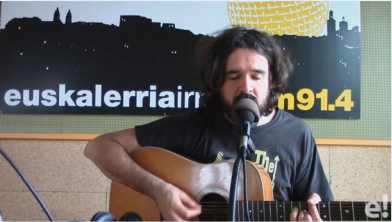
COMMUNITY NUMBERS
Journalists have a special issue with the numbers and the community can also bring to the figures to summarize what the model developed in the Irrintzi Tower has given. One of the most appreciated treasures of radio is the collaborators, volunteers who are often involved in radio programming. Currently, 200 are the most varied in knowledge, ideological tendency and age. Thanks to them, it offers broader local programming than any other laughter, in terms of the number of hours.
Another strong pillar of radio is the partners: There are 1,000 people who contribute money to the radio. And it has hundreds of advertisers, many of whom have shown strong adherence to the project for decades without a license.
Radio, of course, needs an audience. CIES grants Euskalerria Irratia between 6,000 and 8,000 listeners. In the last wave, he confesses 6,000 listeners. It"s not the most appropriate meter for local media in Basque. And it does not take into account that Euskalerria Irratia works in the system of connection and disconnection with the Basque Country Irratia in the Region of Pamplona. In any case, according to the study carried out by Siadeco for the Basque Government on the hearings of the Basque media, the Region of Pamplona is the most powerful radio in Basque throughout the Basque Country.
This study by Siadeco, later ratified by CIES, showed more interesting data about radio audience: 67% of listeners have Spanish as their mother tongue, 61% have higher education and 66% are younger than 55 years. That is, the profile of the audience of Euskalerria Irratia is radically different from the usual profile of the local media audience in Basque, a reflection of the sociolinguistic reality of the leading city of the Basques.
LEADER IN ELEVATION
With the launch in 2013 of Tokikom, the local media platform in Basque, the great Mikel Irizar was explaining to everyone who wanted to hear the elevator metaphor: it represented the media building in Basque. Down the premises. Top, nationals. And all this by linking, transporting and sharing information, an elevator, a symbol of collaboration between large media, small, public and popular initiative.
After explaining the metaphor in Euskalerria Irratia received a very welcome, as in the Irrintzi Tower this elevator had been operating since 1988. It is meant that since the first day Euskalerria Irratia has used the system of connection and disconnection with the Basque Country Irratia, since its creators had two purposes: Creation of radio in Basque in the Region of Pamplona and dissemination of the signal of Euskadi Irratia in the Region of Pamplona.
The creators were right with this decision and was one of the keys to the strong development of radio. Clarification: None of the Spanish broadcasters licensed in the Region of Pamplona has managed to survive without having a state chain in the liver.
CONSEQUENCES OF THE PAST
It is clear that the founders of Euskalerria Irratia were right in many other things. Among them, philosophy: “Although the media has changed, 35 years ago and today we are doing the same. In the Region of Pamplona the Basques live scattered and we offer the Basques a meeting place to meet us, exchange ideas, feel community”, said the journalist who has been working on the radio Reyes Ilintxeta since 1992.
35 years ago, the generous Euskaltzale Eugenio Arraiza joined Mikel Bujanda, Javier Cunchillos, Miguel Javier Urmeneta, Patxi Zabaleta and Jesús Bueno to launch the radio project. Then they received the support of the ikastolas and those who were experiencing movements in favor of the Euskaltegis. These included Sagrario Aleman, who would later be a radio broadcaster and Kike Diez Ultzurrun, who continues to collaborate with the radio.
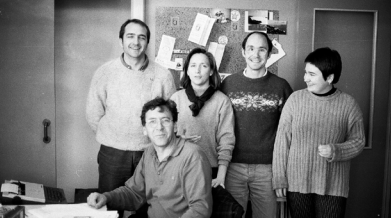
27 YEARS OF TEMPORALITY
“We wanted an entirely professional and conventional means of communication in Euskera, which would give a radio service to the movement for the Basque who was circulating in a circle,” Bujanda said. “We wanted to give the floor to the Basque people here, but also to do it in Basque,” he adds. “This radio would be very small if there were no friends, friends, interlocutors and people who contribute a diverse gender, collective, community. The more alive that Basque is in the region, the stronger the radio", he summarizes.
They began to issue provisionally, pending a license that would supposedly arrive frequently, and spent 27 years in allegation, captivating Vasco-Arab regionalists. In front of Bujanda, accompanied by lawyers working in exchange for kisses or very little money, three times they defeated UPN’s foral power in the Supreme Court. Merit can be better weighted in times of judicial aggression. They finally got the license in one of the best victories in the Basque industry in recent decades.
FUTURE
“We knew all the answers, we changed all the questions.” The phrase is resounding from Mario Benedetti and perfectly reflects the situation of Euskalerria Irratia. In 2016 he received the issuance license at once – attention: From the hand of the government of Uxue Barkosen, but by decision of the contracting bureau designated by Yolanda Barcina.
Since then, it has strengthened the model developed until then: once and for all stabilizing access to subsidies, improving advertising revenue, placing an appropriate broadcaster on Mt. Ezkaba, improving the working conditions of the work team.
At the same time, the change in radio consumption habits: audio platforms, fragmentation of radio content, podcasts… has caused the earthquake caused by digitization 20 years ago on paper, which has accentuated the need to move from radio to a communication project euskalerriairratia.eus, from being the web of a radio to being the multimedia portal of Pamplona.
DIGITAL JUMP
And that"s what Euskalerria Irratia is about, looking forward to. After discovering how you can make a local radio in a capital city, you now have to design how to develop an information portal in a capital city. Always starting from a radio, without leaving FM or online broadcast.
A digital leap has been taking place in recent years. First of all, he digitized the radio production system by installing a digital sound table, digitizing all sound sources through the Dante system, the right software that turns all journalist stands into production centers. In this way, the transfer of content from the radio to the web, platforms and social networks is expedited.
In addition, a first step is being taken in the Mobile Journalism and has installed a system of smart cameras in the main studio with automatic video editing software according to the microphone that speaks.
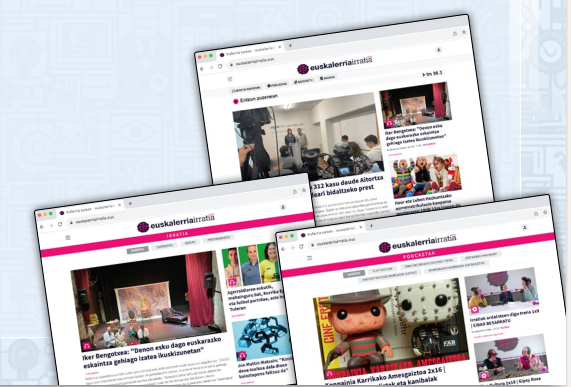
WAGER ON VIDEOPODCASTS
These technical improvements open several doors to the Basques of the Region of Pamplona to offer them the most appropriate multimedia digital portal. One of the main bets is to have the most appropriate infrastructure for producing videopodcasts. Not only, expanding content of this kind to win young audience. In addition, it offers this kind of infrastructure to attract young creators from the Region to the radio, to carry out content of this kind. That is, to create and strengthen ties with the new generations.
This year he has launched two videopodcasts. Radio pays us a program that combines train, music and humor, presented by Ion Celestino and Amets Aznarez. And Flop Kultura, a space dedicated to pop culture led by artists Eneko García and Danel Pascual, behind Albina Stardust and Divina Comedia. Both are working very well.
Previously there were other podcasts in collaboration with other organizations: The nightmare of La Compañía Street, about fantastic film, presented by Santi León and Jaume Gelabert, in collaboration with the Official Language School of Pamplona; Why learn this? Program dedicated to history in collaboration with the UPNA; and we do well to be from Pamplona, humor, carried out by Yasmine Khris Maansri and Iker Tubia, in collaboration with the Laba association.
In any case, and as Ilintxeta said, even if the means are changed, the objective is always the same: Offer the Basque community of the Region the best possible service, working with the community, the community and the community.


